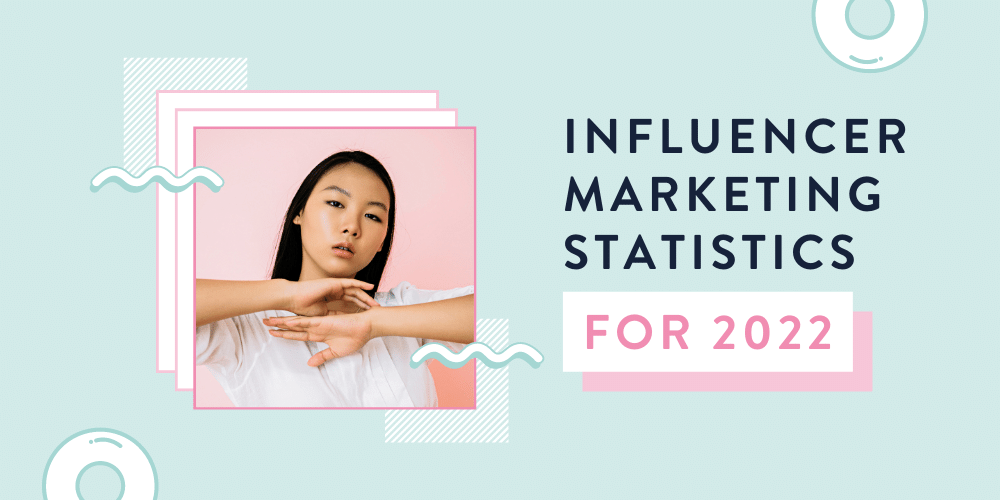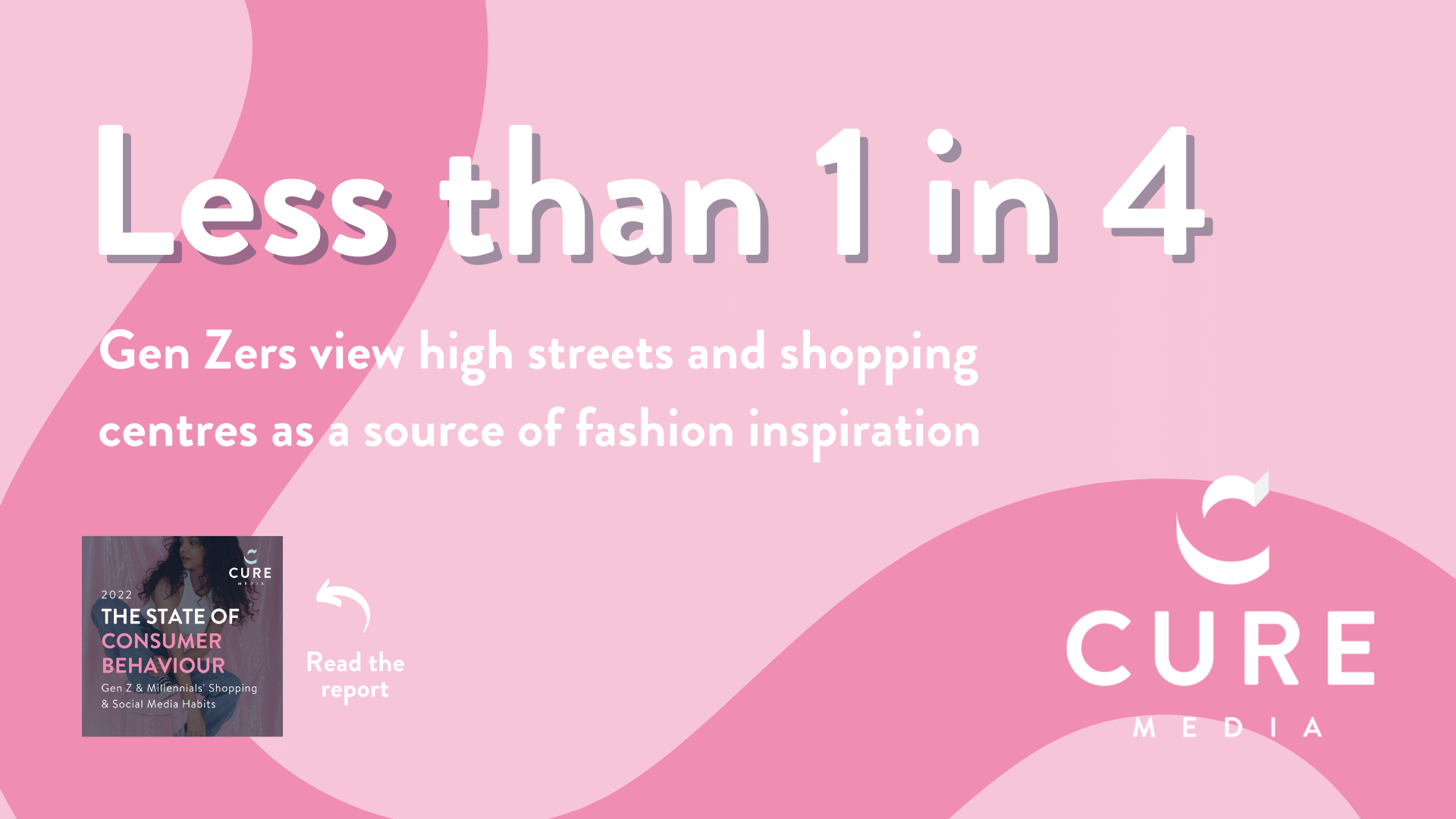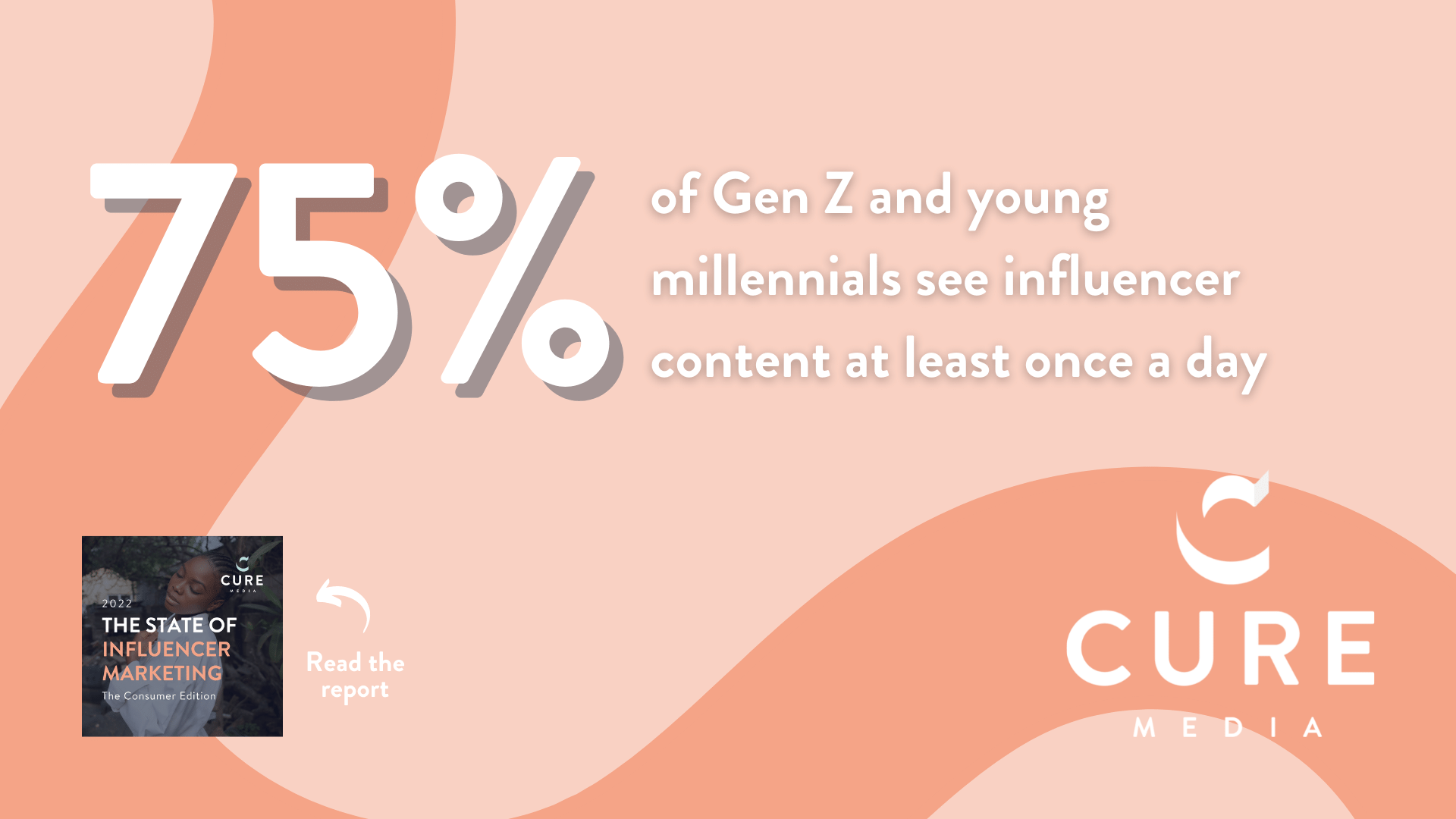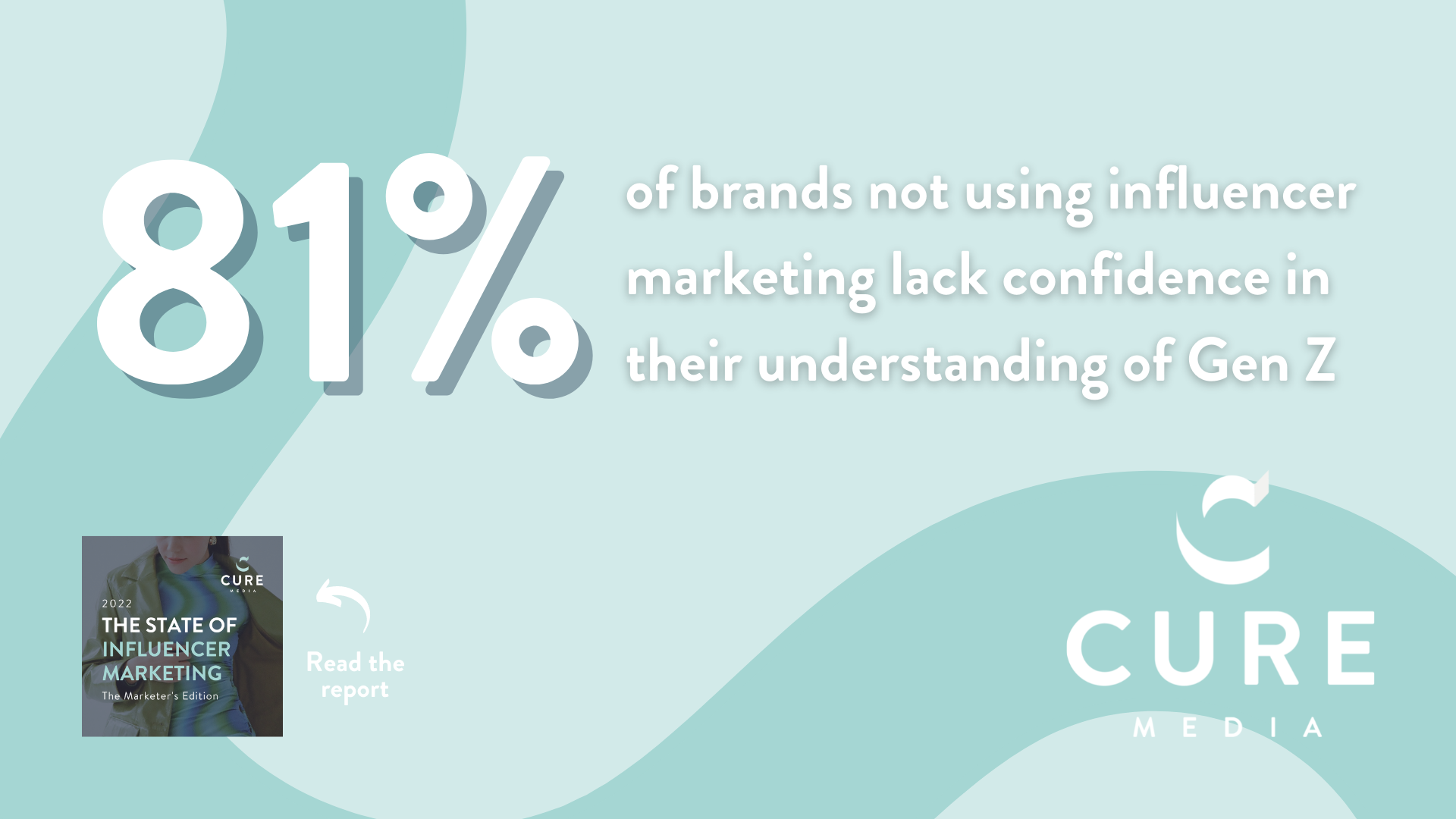To understand the state of influencer marketing in the UK in 2022, Cure Media conducted extensive research into the channel and the people who work within it, surveying over 1,000 consumers and 208 marketing decision-makers across the UK.
The surveys were carried out in early 2022 to ensure findings were relevant and contemporary, and respondents were sourced from different age groups, regions and genders to offer a broad spread of insights and opinions indicative of the wider market.
Influencer marketing statistics 2022
To set the scene for the latest influencer marketing statistics of this year, we’ve written 100+ pages combined across three reports – here are a few of the key findings:
Fewer than one in four Gen Zers look to physical retail outlets for fashion inspiration, whereas 100% of all consumers turn to social media. (Cure Media)
It’s no surprise by now that younger audiences are so enthralled by social media that they hardly notice physical stores. Fashion inspiration is always in the palm of their hands, which significantly reduces their interest to shop in-store.
Nearly 75% of Gen Z and young millennials see influencer content at least once a day. (Cure Media)
Influencers play a large role in the lives of Gen Z and young millennials, which makes influencers a fantastic avenue to reach these target audiences. Brands need to acknowledge this dominant consumption habit from younger audiences, especially if that’s their main customer base.
81% of brands not using influencer marketing lack confidence in their understanding of Gen Z. (Cure Media)
Consumer behaviour currently acts as the biggest barrier for brands as they don’t feel confident enough to use the channel. We still see many brands with a younger target audience using a large percentage of their marketing mix on TV, which further shows the lack of understanding and/or unwillingness to change amongst “traditional” brands.
Influencer marketing statistics 2021
Want to know about what we found in 2021? We researched 300+ leading European B2C brands from various industries including fashion, interior, beauty and lifestyle, as well as 1000+ UK consumers within the millennial generation.
80% of B2C brands currently or plan to work with influencer marketing. (Cure Media)
We’re seeing a huge shift in 2021 whereby four in five B2C brands are proactively using or considering influencer marketing as part of their marketing activities. Not only does this reflect on the trust that brands have in influencers, but brands are starting to understand the value that an influencer marketing strategy provides.
85% of marketers say that their top goal with influencer marketing is to raise brand awareness. (Cure Media)
In a world with more brands and companies than ever before, especially so on the digital scene, knowing how to stand out from the crowd is a must for most marketers. Influencer marketing is a great way to increase brand awareness, and this stat reflects on the priorities that brands have when considering influencer marketing.
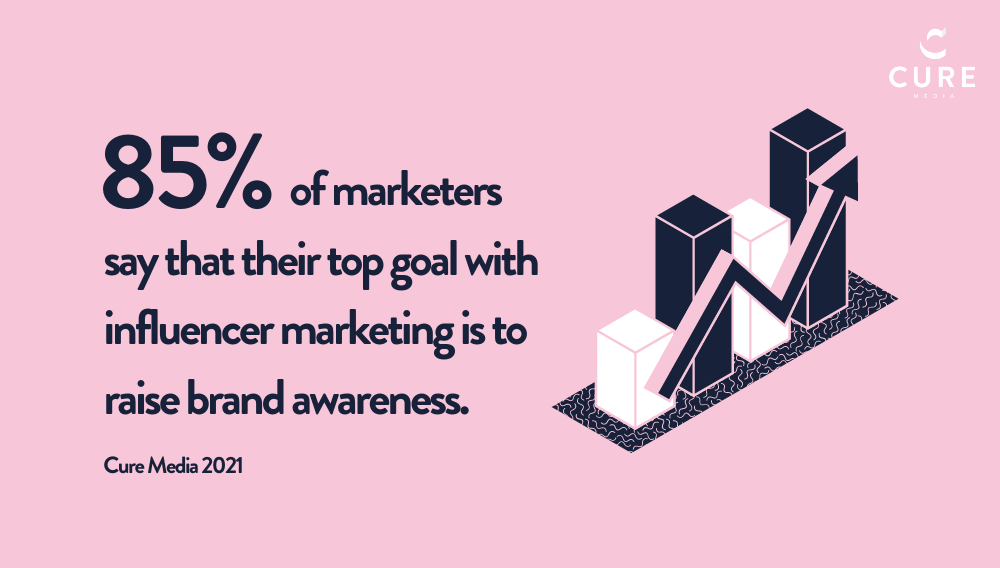
80% of B2C brands outsource their influencer marketing activities. (Cure Media)
Most B2C brands don’t have dedicated in-house teams to execute influencer marketing activities. The influencer landscape is much more complex today compared to just a couple of years ago, and there are multiple tactics and platforms to choose between in order to build a successful strategy. This makes it difficult to effectively handle influencer marketing in-house without getting external help from an influencer marketing agency.
62% of marketers say that measuring the effect of influencer marketing is their biggest challenge. (Cure Media)
The majority of marketers say their biggest challenge with influencer marketing is the ability to measure its effectiveness. At the same time, being able to tell how a marketing activity affects the business’s performance, and ultimately the bottom line, is key. One of the reasons why marketers struggle with measuring the effect of influencer marketing is probably because the industry tends to take a very short term view to the channel. Also, most marketers do not consider how influencer marketing affects other channels, i.e. how to measure the indirect effects of the channel. These can also be called “positive spillover effects” or “interaction effects”.
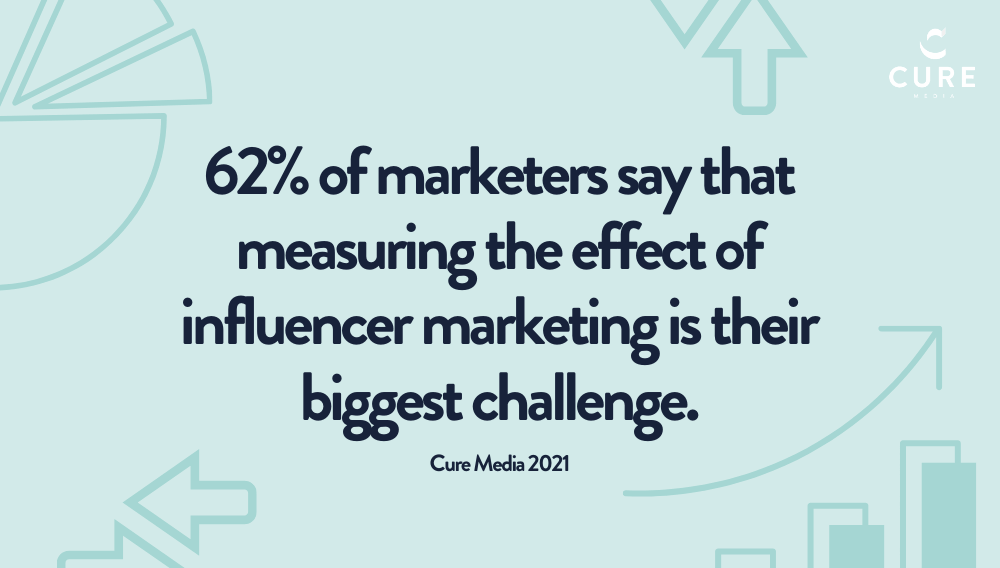
49% of consumers think an influencer recommendation is more trustworthy than a brand recommendation. (Cure Media)
In this day and age, people buy into people, which is why influencers are a major part of evoking trust in consumers. Brands would never spread anything negative about themselves, so a third party has to be involved to get a truer perspective out to the public. Influencers carry more weight in this regard because audiences trust that the influencer has their interests at heart – just like in a real friendship.
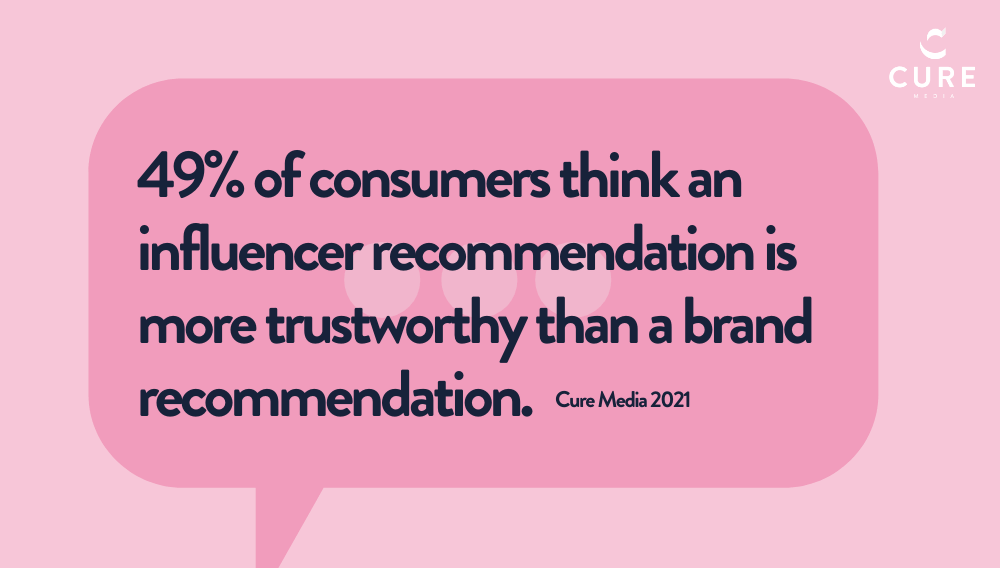
48% of consumers think influencer marketing is more authentic than other marketing methods. (Cure Media)
Almost half of millennial consumers see more traditional marketing activities such as TV, print and radio as less authentic than influencer marketing. These marketing methods are almost always solely configured by the brands themselves, which can make them appear deceptive and untrustworthy.
61% of consumers are more likely to follow Nano and Micro-influencers compared to Macro and Mega-influencers. (Cure Media)
Nano and micro-influencers have smaller yet highly engaged followers. This is because the influencers typically cater for a specific niche and/or industry, leading to more relevant content and recommendations for the consumers. Another reason why consumers are more likely to follow smaller influencers might be because these influencers have the time and ability to interact with their followers – answer comments, invite to conversations, and eventually build a deeper relationship. This bond makes it easier for consumers to engage and relate.
63% of consumers think Nano and Micro-influencers are more trustworthy compared to Macro and Mega-influencers. (Cure Media)
One reason why most consumers regard nano and micro-influencers as more trustworthy is because they feel closer to these people (compared to influencers with hundreds of thousands or millions of followers); You are literally not just one in a million for a nano or micro-influencer – you are a part of a smaller crowd, and you often get a reply if you comment on a post. Additionally, since nano and micro-influencers are often specialised in a particular niche, people tend to follow them because of their knowledge and passion within this field – e.g. interior, skincare or even a societal issue. Therefore, when these influencers post about a topic, it comes across as more trustworthy since they should know what they are talking about.
76% of B2C brands plan to increase their influencer marketing budget over the next three years. (Cure Media)
B2C brands are noticing the value of influencer marketing, which is why three out of four are planning to increase their budgets for the channel for the near future. It’s important to note that the lasting effects of the coronavirus pandemic has seen consumers using social media more, and this further boosts the ROI of having an influencer marketing strategy.
44% of consumers feel more positive about a brand that uses influencers in their marketing strategy. (Cure Media)
Consumers are increasingly becoming interested in what influencers have to say because of their authentic viewpoint on products. Brands that utilise influencers in their marketing strategy are able to tap into the relationship that these influencers have built with their followers, and thus appear more transparent with their target audience.
60% of consumers have purchased something recommended by an influencer at least once. (Cure Media)
Most consumers have been successfully influenced by an influencer in terms of making a purchase. Especially so now, as the social platforms introduce countless new social commerce features, enabling consumers to shop products directly from the influencers’ feeds without having to leave the platforms. It’s evident that influencers play a massive role in getting the attention of consumers whilst also encouraging them to make a purchase for products that the influencer recommends. This shows a high level of trust between the influencer and their followers – something that will ensure sustainable results for brands in the long-term.
Do you want to be the first to know about the latest influencer marketing statistics and social media trends and insights? Sign up for our biweekly newsletter to get the freshest tips and tricks, delivered straight to your inbox!


